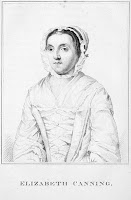 One of my favorite TV shows is I Survived… on the Biography Channel. On this show a person sits against a black background and tells their story of survival. There’s no reenactment, just flashes to photographs and videos of the locations where the story took place. It is surprisingly effective. Some people tell stories about surviving the elements, a snowstorm, the ocean, the jungle. Others tell stories of surviving abduction or assault by robbers or strangers. Too many stories are told by women who survived attempts to kill them by husbands or lovers.
One of my favorite TV shows is I Survived… on the Biography Channel. On this show a person sits against a black background and tells their story of survival. There’s no reenactment, just flashes to photographs and videos of the locations where the story took place. It is surprisingly effective. Some people tell stories about surviving the elements, a snowstorm, the ocean, the jungle. Others tell stories of surviving abduction or assault by robbers or strangers. Too many stories are told by women who survived attempts to kill them by husbands or lovers.
 This weekend I came across an “I Survived” story in a book I’m reading, London’s Sinful Secret: The Bawdy History and Very Public Passions of London’s Georgian Age by Dan Cruickshank. This book tells about the Georgian and Regency sex industry, the world of courtesans and prostitutes in which young and innocent girls were enticed or trapped by shrewd bawds.
This weekend I came across an “I Survived” story in a book I’m reading, London’s Sinful Secret: The Bawdy History and Very Public Passions of London’s Georgian Age by Dan Cruickshank. This book tells about the Georgian and Regency sex industry, the world of courtesans and prostitutes in which young and innocent girls were enticed or trapped by shrewd bawds.
In 1753, eighteen year old sevant Elizabeth Canning was abducted by two men and taken to a house where a gypsy woman tried to coerce her into prostitution. Elizabeth refused and was imprisoned in an attic room and given only bread and water to eat in an effort to wear down her resolve. The gypsy woman threatened to cut her throat if Elizabeth tried to escape. After 28 days, Elizabeth managed to remove a board from a window, to climb out and jump to the ground and to find her way back home. Her ordeal outraged the citizenry. The authorities made an effort to locate the house where she was imprisoned. Elizabeth identified the house and the gypsy woman who was arrested.
Here’s where the story turns strange in a way that could only happen in this era. The gypsy woman vowed her innocence and soon the citizenry were taking sides. Who was guilty and who was innocent? The gypsy had an alibi and Elizabeth’s story had inconsistencies. Ultimately, the gypsy was acquited and Elizabeth was convicted of perjury and was transported to New England.
But Elizabeth survived even this consequence. She eventually married a great-nephew of the governor of Connecticut and had five children.
This story was much more complex than I’ve described here, with Henry Fielding and others involved, but even if Elizabeth’s story was not as she described (and never wavered from), she had survived something. Her condition when she escaped was “deplorable.” Her hands and face were black, her ear was injured and bleeding. She was dressed only in a shift and petticoat.
I love survival stories. I love hearing about how people can endure the unendurable and make it through. We humans can be a tough lot, whether we live in Georgian England or in our modern, sometimes dangerous world.
This weekend, as the events of the Tucson shooting were unfolding and the fate of Congresswoman Giffords was uncertain, I thought of I Survived…. and the stories of so many people who had managed to survive shootings, stabbings, shark attacks, subzero temperatures, etc. Perhaps if they could survive, so would Giffords and the other injured victims. I pray so, and I pray for those who did not make it. My heart goes out to their families.
Do you like survival stories? Do you know of a good one?









